
Detail of Amos Doolittle, Connecticut From the best Authorities, first printed by Matthew Carey, Philadelphia, Pennsylvania, 1795. (Courtesy, Connecticut Historical Society.)
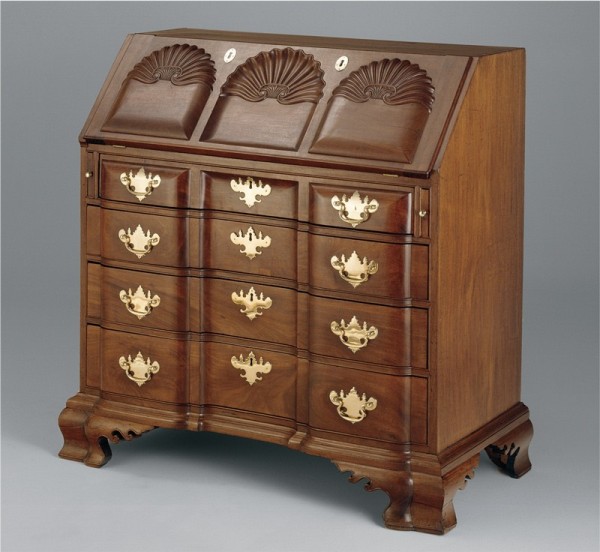
Desk, attributed to Felix Huntington, Norwich, Connecticut, 1775–1790. Mahogany and zebrawood with white pine. H. 43 1/4", W. 44 1/4", D. 22". (Courtesy, Art Institute of Chicago, gift of the Antiquarian Society through the Jessie Spalding Landon Fund, 1948.122.)
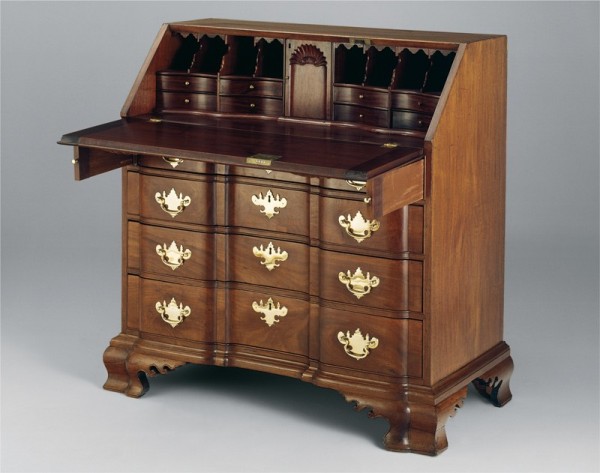
Desk illustrated in fig. 2 with the fallboard open.
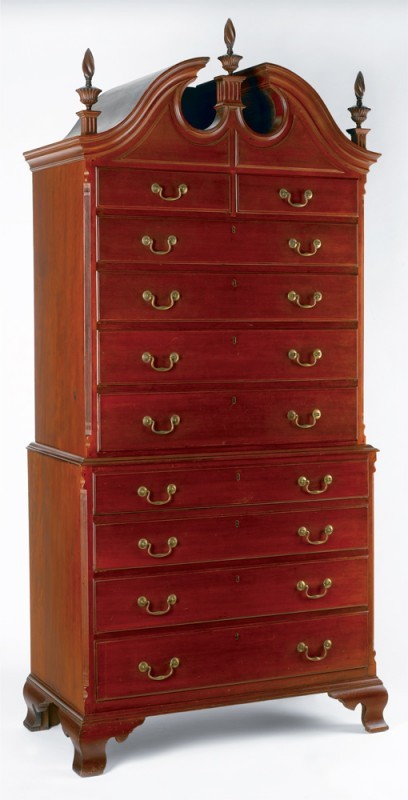
Chest-on-chest, attributed to Ebenezer Tracy, Lisbon, Connecticut, 1796. Cherry with white pine, tulip poplar, birch, and chestnut. H. 81 1/4", W. 40 1/4", D. 20 1/2". (Courtesy, Connecticut Historical Society, gift of Frederick K. and Margaret R. Barbour in memory of Newton C. Brainard, 1965.53.0; photo, Gavin Ashworth.) This object is inscribed “Lisbon / 1796.” The feet and base molding are restored.
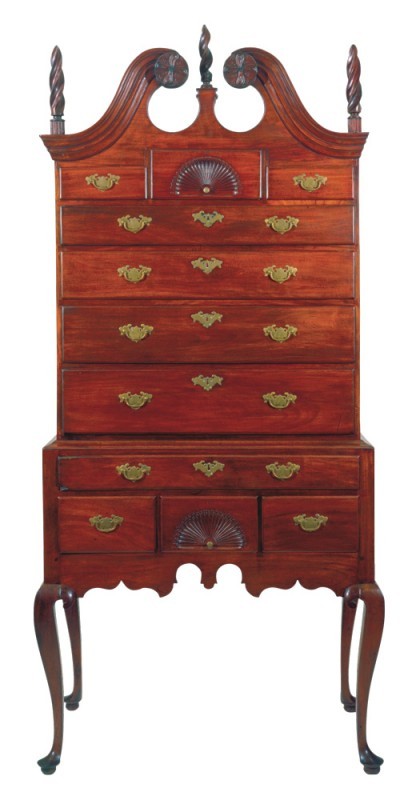
High chest, attributed to Jesse Birchard, Norwich (Bozrah), Connecticut, 1770–1790. Mahogany; secondary woods not recorded. H. 84", W. 36 3/4", D. 21 1/4". (Private collection; photo, Walton Antiques.)
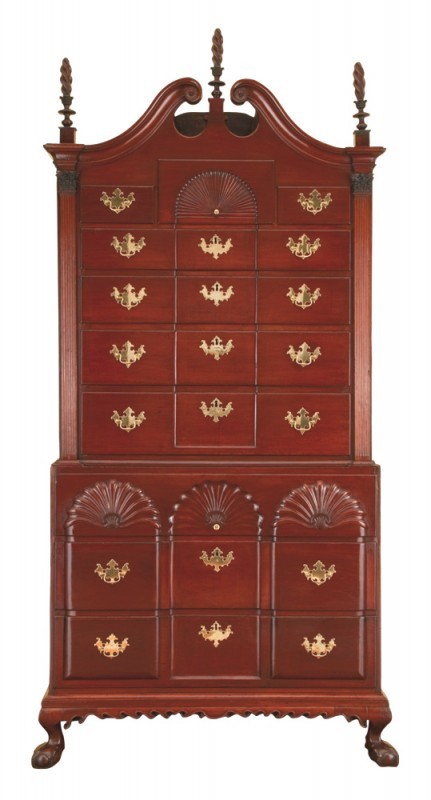
Chest-on-chest, American, Norwich area, Connecticut, 1770–1800. Cherry; one original finial; replaced brasses. H. 95 1/2", W. 46", D. 23 1/4". (Courtesy, The Baltimore Museum of Art: Dorothy McIlvain Scott Collection, BMA 2012-287; photo, Miitro Hood.)
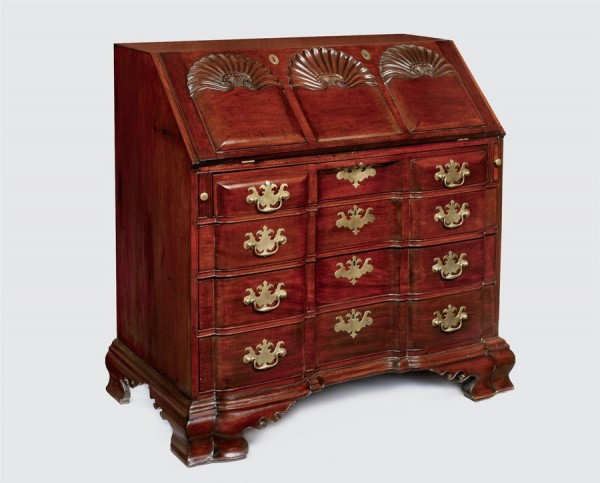
Desk, attributed to Felix Huntington, Norwich, Connecticut, 1775–1790. Mahogany with white pine and tulip poplar. H. 43 1/2", W. 44", D. 22 1/2". (Private collection; photo, Gavin Ashworth.)

Detail of the desk illustrated in fig. 7 showing the fallboard open. (Photo, Gavin Ashworth.)
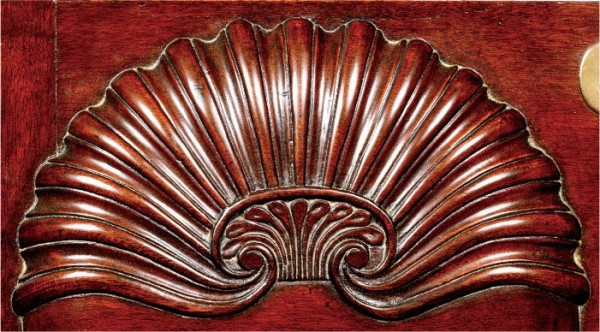
Detail of the left shell on the fallboard of the desk illustrated in fig. 7. (Photo, Gavin Ashworth.)

Detail of the center shell on the fallboard of the desk illustrated in fig. 7. (Photo, Gavin Ashworth.)
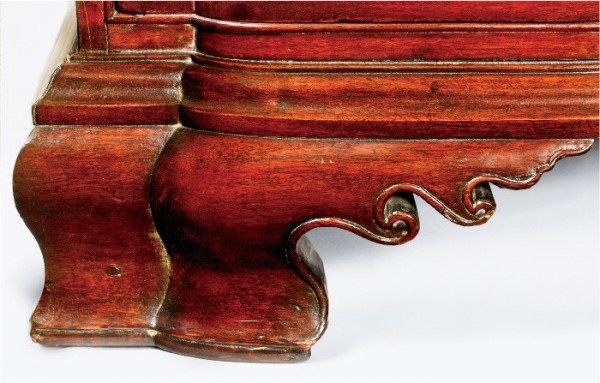
Detail of the left front foot of the desk illustrated in fig. 7. (Photo, Gavin Ashworth.)
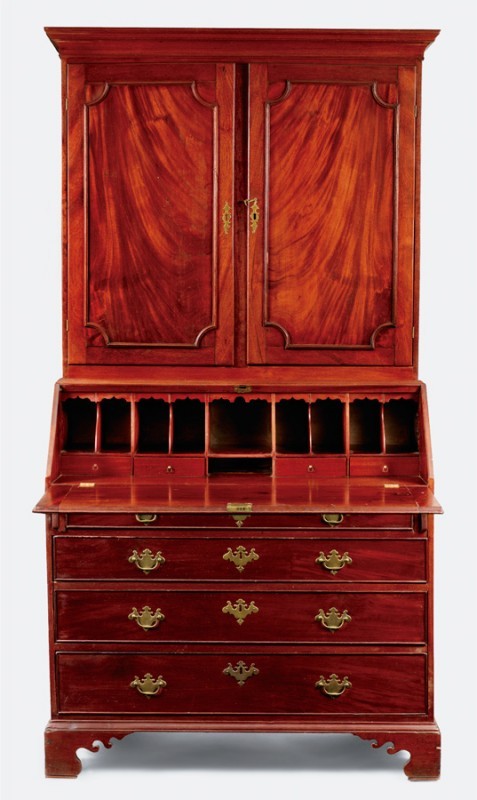
Desk-and-bookcase, attributed to Felix Huntington, Norwich, Connecticut, 1785–1800. Mahogany and cherry with white pine and tulip poplar. H. 83", W. 43 1/2", D. 20 1/4". (Courtesy, Scotland Historical Society; photo, Gavin Ashworth.)
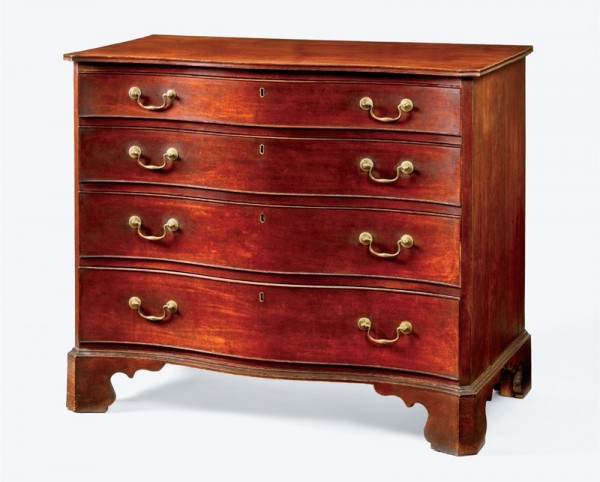
Chest of drawers, attributed to Felix Huntington, Norwich, Connecticut, 1785–1795. Cherry with white pine and chestnut. H. 34 1/2", W. 38 1/2", D. 19 1/2". (Courtesy, Hartford Steam Boiler Inspection and Insurance Company; photo, Gavin Ashworth.)
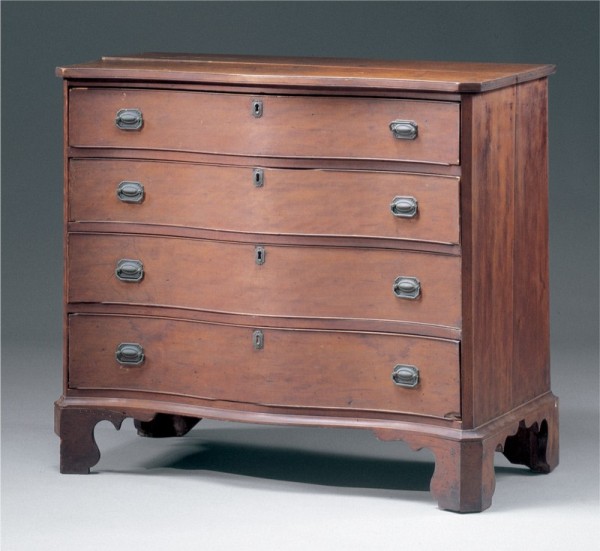
Chest of drawers, attributed to the shop of Felix Huntington, Norwich, Connecticut, 1795–1805. Cherry with white pine and chestnut. H. 35 1/2", W. 38 1/2", D. 19". (Private collection; photo, Sotheby’s.)
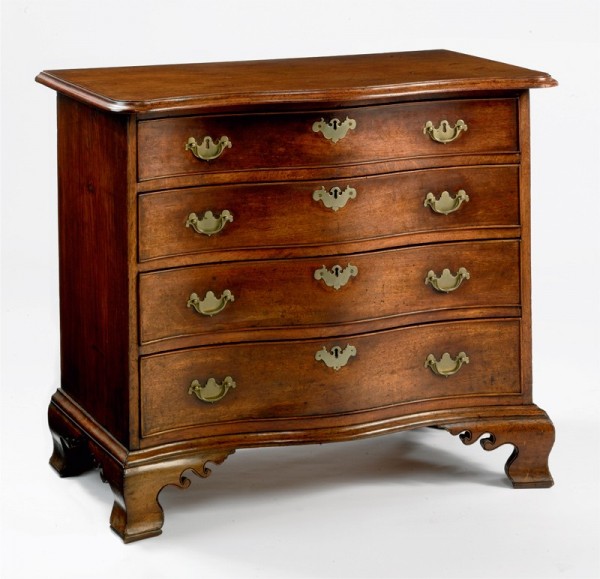
Chest of drawers, attributed to Felix Huntington, Norwich, Connecticut, 1775–1790. Mahogany with white pine and chestnut. H. 32", W. 37 1/2", D. 21 1/2". (Private collection; photo, Sotheby’s.) The design of this chest is essentially the same as that of the lower section of the chest-on-chests illustrated in figs. 17 and 22. The faces of the front feet differ from those of the chest-on-chests in having a quirk bead rather than rounded beading. The chest is unusually small with a 33-inch case width and an elegant molded top with generous overhang and rounded corners.
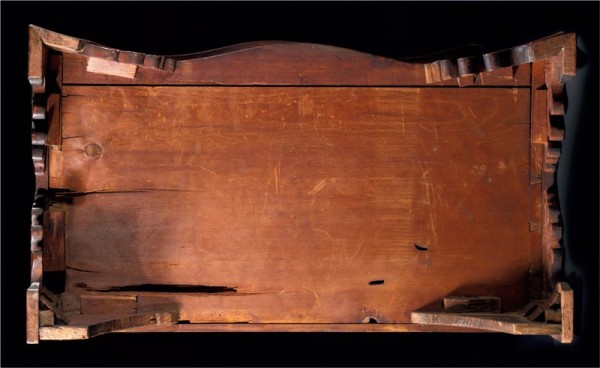
Detail of the foot blocking on the chest illustrated in fig. 15. (Photo, Sotheby’s.) The triangular blocking of the right front foot is original. The square blocking elsewhere is replaced.
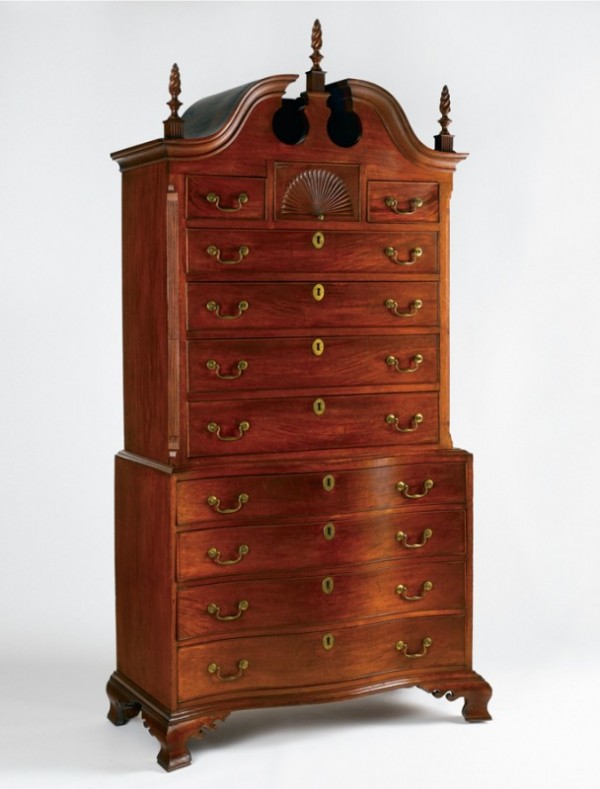
Chest-on-chest, attributed to Felix Huntington, Norwich, Connecticut, 1775–1790. Mahogany with white pine and tulip poplar. H. 81 1/4", W. 40 3/4", D. 20". (Courtesy, Connecticut Historical Society, gift of Frederick K. and Margaret R. Barbour, 1960.7.12; photo, Gavin Ashworth.)
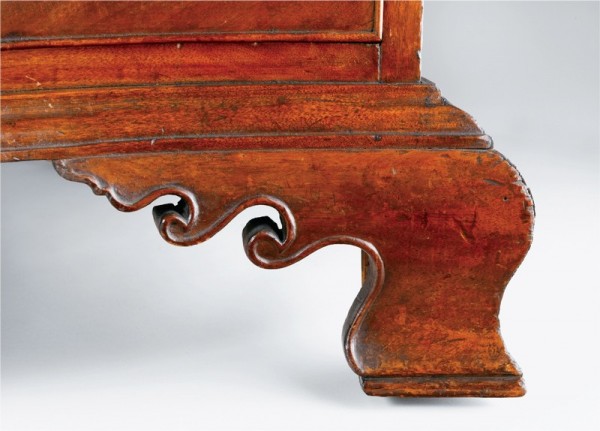
Detail of the right front foot of the chest-on-chest illustrated in fig. 17. (Photo, Gavin Ashworth.)
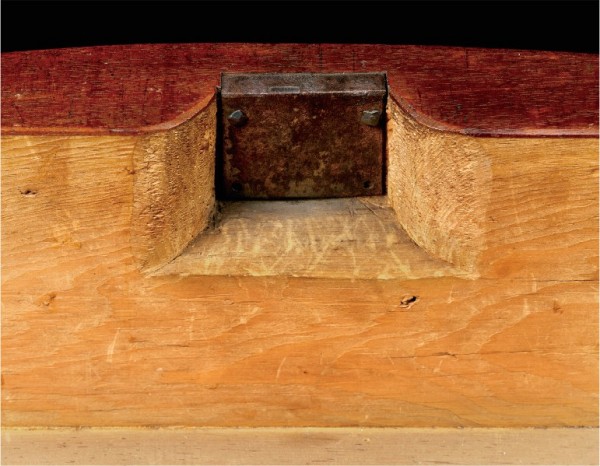
Detail of a serpentine drawer from the lower case of the chest-on-chest illustrated in fig. 17, showing the rounded and chamfered cutout for the lock. (Photo, Gavin Ashworth.)
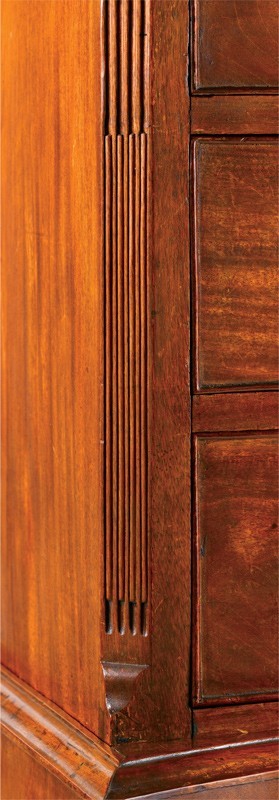
Detail of the left chamfered corner of the chest-on-chest illustrated in fig. 17. (Photo, Gavin Ashworth.)
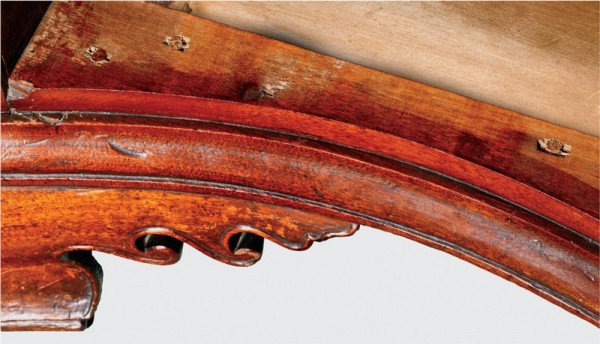
Detail of the bottom rail of the lower case of the chest-on-chest illustrated in fig. 17, showing wooden pins used as fasteners. (Photo, Gavin Ashworth.)
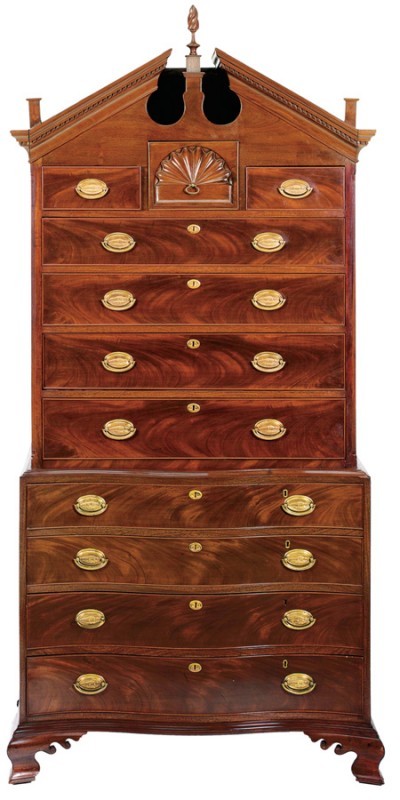
Chest-on-chest, attributed to Felix Huntington, Norwich, Connecticut, 1785–1800. Mahogany with white pine, tulip poplar, and chestnut. H. 90 1/2", W. 41 1/4", D. 20 1/2". (Private collection; photo, Christie’s.) Pitched pediments are rare in Connecticut case furniture. Although different in design, the construction of this chest-on-chest is similar to the example illustrated in fig. 17. The finial, side plinths, and brasses are replaced.
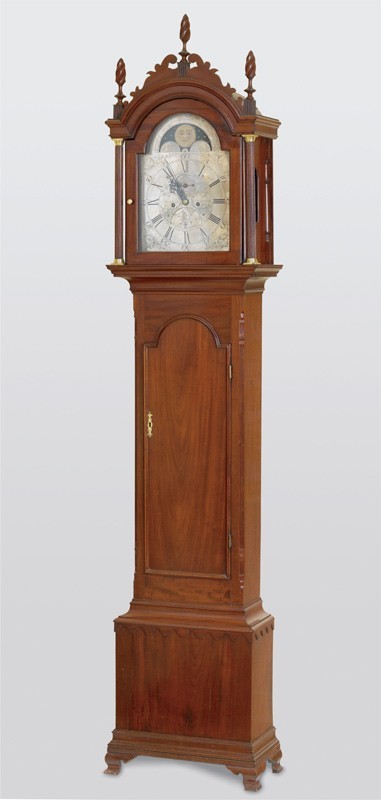
Tall clock case, attributed to Felix Huntington, Norwich, Connecticut, 1785–1800. Mahogany with white pine and chestnut. H. 88 1/4", W. 20", D. 9 3/4". (Private collection; photo, David Stansbury.) The movement is by Nathaniel Shipman. The feet, fretwork, and finials are restored.

Detail of the right front corner of the clock case illustrated in fig. 23, showing chamfering and a lamb’s-tongue terminal similar to that on the chest-on-chest illustrated in figs. 17 and 20. (Photo, David Stansbury.)
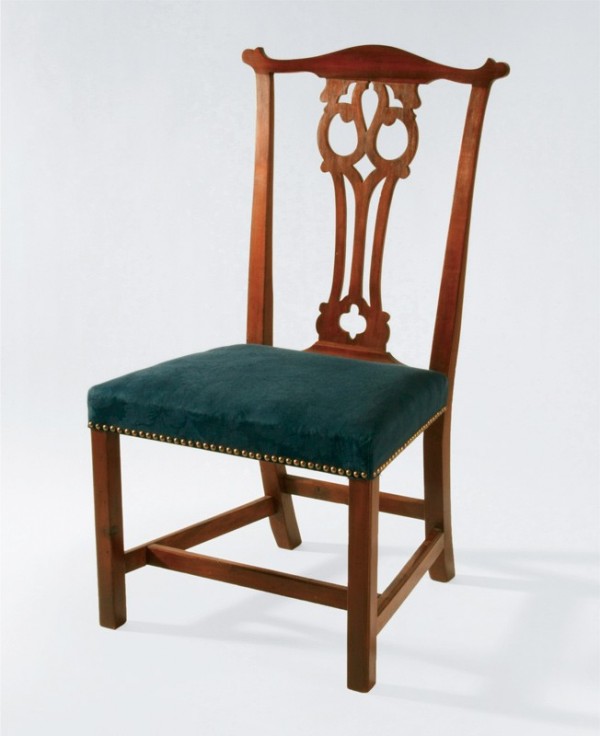
Side chair, attributed to Felix Huntington, Norwich, Connecticut, 1775–1795. Mahogany with maple. H. 37 1/2". W. 21 1/4", D. 17". (Private collection; photo, Nathan Liverant & Son Antiques.) The front knee brackets are missing, and the legs are pieced out at the bottom.

Side chair, attributed to Felix Huntington, Norwich, Connecticut, 1775–1795. Mahogany with maple. H. 37 1/4", W. 20 1/4", D. 16 1/2". (Courtesy, Leffingwell Inn, The Society of the Founders of Norwich, Connecticut, Inc., gift of Henry La Fontaine, #193; photo, Connecticut Historical Society.)
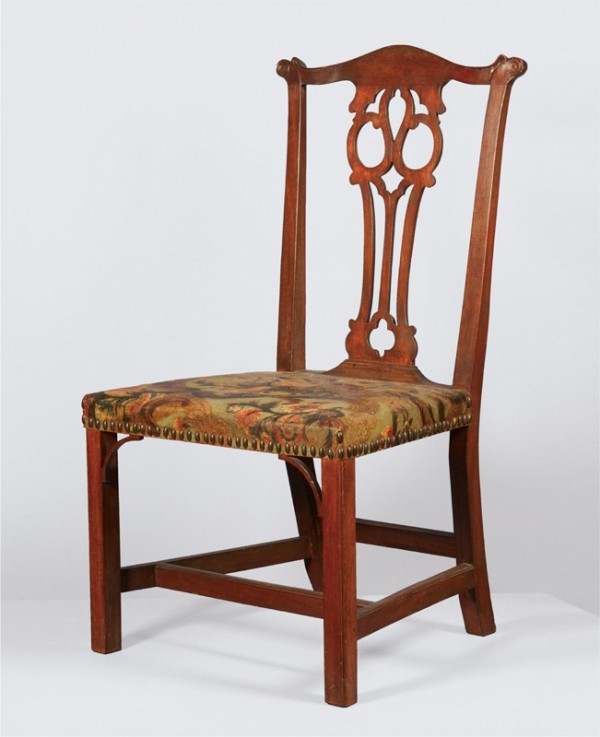
Side chair, attributed to Felix Huntington, Norwich, Connecticut, 1775–1790. Mahogany with maple and white pine. H. 38 1/4", W. 21", D. 17". (Courtesy, Lyman Allyn Museum, 1999.16.) Two chairs from the set represented by this example retain their original gilt leather upholstery and oval brass nails. A third chair was reupholstered between 1958 and 1990.
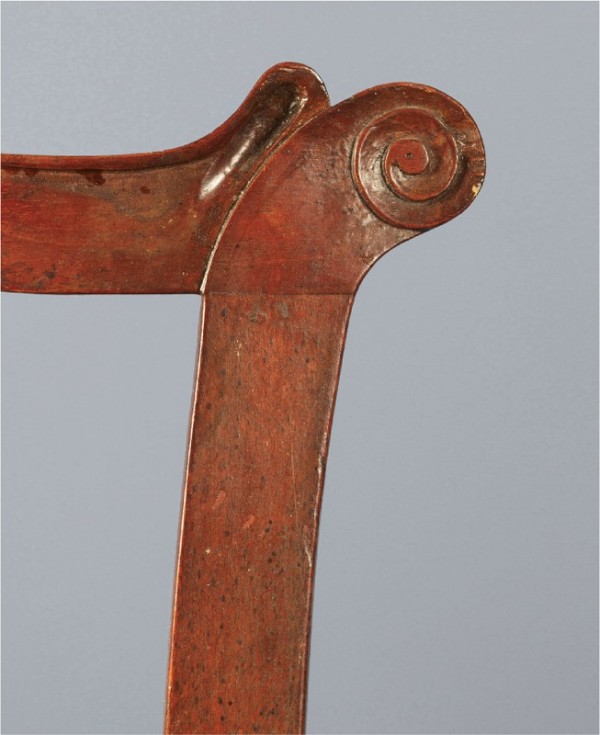
Detail of the spiral carving on the right crest ear of the side chair illustrated in fig. 27.
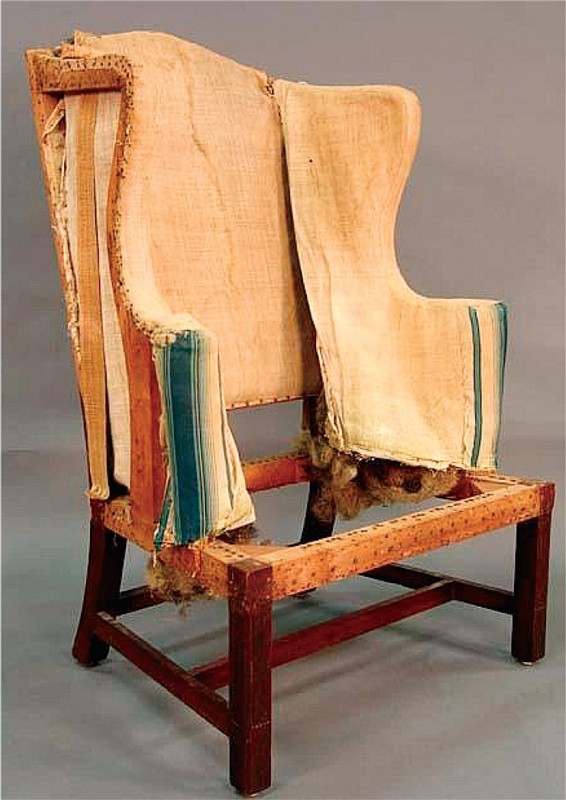
Easy chair, attributed to Felix Huntington, Norwich, Connecticut, 1775–1795. Mahogany with maple and white pine. H. 57", W. not recorded, D. 21". (Private collection; photo, Nadeau Auctions.) This chair has stop-fluted front legs with unusual chamfering at the corners. As with the blockfront desks (figs. 2, 7), the chair reflects strong Newport influence.

Desk, attributed to Nathan Clark, Norwich or Mansfield, Connecticut, 1785–1793. Mahogany and cherry with maple and white pine. H. 43", W. 42", D. 20". (Courtesy, Connecticut Historical Society, museum purchase in memory of Newton Case Brainard, 1966.85.0; photo, Gavin Ashworth.)
